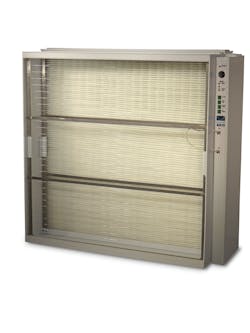It’s a basic rule in sales: We put our best foot forward when selling. Or more directly, we stress the positive aspects of our product and either refrain from or minimize any information that might create a negative or questionable impression.
Indoor Air Quality (IAQ) products are no exception. While many offer desirable benefits, none completely solve all the issues for safe, healthy, clean air.
This should suggest that technology — until recently — hasn’t caught up with the IAQ industry. And that is a market that will continue to grow at a terrific clip. The U.S. IAQ market “for indoor air quality products should grow from $2.4 billion in 2020 to $3.2 billion by 2025, at a compound annual growth rate (CAGR) of 6.4% for the period of 2020-2025,” according to BCC Research.
While this growth is impressive, most of the revenue comes from portable products sold through retail channels. The HVAC contractor is missing out … big time.
To gain your slice of that market share, it helps to understand shortcomings when promoting a product and the objections you could confront from a knowledgeable customer.
It’s About Size and WeightMost airborne particles, pathogens and volatile organic compounds (VOCs) are so light and small that the airstream never catches and returns
Filter Falsehoods
People buy IAQ products for their perceived health benefits. If you don’t include a filter with your IAQ solution, zero benefits occur, no matter how you frame it in pseudo-scientific sales language. It’s like a body without a heart.
If you are installing a 1-inch MERV 8 Filter to reduce cost or are worried about high-static pressure, then you have no real IAQ health benefits. The CDC recommends at least a MERV 13.
Even if you have an effective filter in your system, if it doesn’t capture and destroy airborne particles, pathogens or VOCs, what’s the point? More importantly, what do you tell your customers?
Here’s the reality: If you are installing a 1-inch MERV 8 Filter to reduce cost or are worried about high-static pressure, then you have no real IAQ health benefits. The CDC recommends at least a MERV 13, with most hospital operating rooms using MERV 14-15. Remember that capturing is not the same as killing a pathogen. I wouldn’t want to be the homeowner who purchased an expensive portable filter for their child’s bedroom that had had a “HEPA” filter and, after removing it for cleaning or replacement, shook free all those captured contaminants into the same air they were breathing. Other technologies, such as activated charcoal, will release VOCs back into the airstream like an oversaturated sponge. Which quality filter do you use, and can you replace it without adding particles to the air?
Oxidizers
Any IAQ product that produces any quantity of oxidizers, including ozone or hydroxyl radical (“friendly” oxidizers), has a negative health impact. If you’re serious about offering an IAQ product that offers true health benefits, search the internet for “ozone and health” or “hydroxyl radicals and health.” The results are grim. All reputable organizations, including ASHRAE, EPA, and the American Lung Association. say these byproducts are unacceptable even in low concentrations. Does your product produce oxidizers?
Performance Issues
Highly restrictive air filters, whether clean or dirty, will cause HVAC system performance issues, provide less comfort, increase noise and utility bills, raise repair costs and contribute to shortened equipment life. Experienced HVAC techs know that high static problems are the leading reasons for service problems, call-backs and customer dissatisfaction. All of these problems can cost you a lot; every unnecessary call-back like this comes right from your bottom line. How does your product minimize high static problems?
I have a friend in public relations who will say to himself when confronted with a problem, “If you’re so smart, what would you do?” It’s his way of challenging himself with a vexing riddle and urging him to think more deeply and creatively about the issue and not give "shoot-from-the-hip" answers). Owners, executives and decision-making contractors should submit the IAQ products they offer to this self-test to determine if it passes. Does your product:
- Remove airborne particles from occupied space?
- Include a high-efficiency medium that captures and contains the smallest airborne contaminants?
- Destroy or inactivate pathogens, remove VOCs and prevent them all from reentering the occupied space?
- Do not create harmful byproducts, including ozone, hydroxyl radicals and formaldehyde, etc.?
- Do not excessively restrict airflow and hurt the performance and life expectancy of the HVAC system?
If your product does all of these, you get a gold star. If you fail to answer any of the questions I’ve raised, it’s time to look at a new technology that will do these things.
Tom Piscitelli, a 45-year veteran of the HVAC industry, is vice-president/distributed markets at SecureAire. He is seeking dealers who are interested in learning more about SecureAire’s Particle Control Technology. Contact Tom at [email protected] or 425-985-4534.
About the Author
Tom Piscitelli
Vice president, distributed markets
Tom Piscitelli, a 45-year veteran of the HVAC industry, is vice-president of distributed markets at SecureAire.
He is seeking dealers who are interested in learning more about SecureAire’s winning and profitable Particle Control Technology.
Contact Tom at [email protected] or 425-985-4534.

